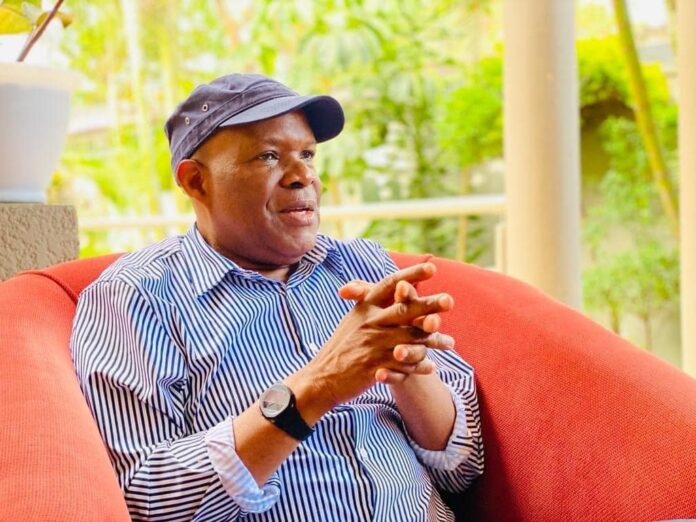THE FREE EDUCATION LIE, DECEPTION
The importance of free education needs neither theoretical nor political discussion. The right to education has been recognised as a human right in a number of international conventions, including the International Covenant on Economic, Social and Cultural Rights, which recognises a right to free, primary education for all, an obligation to develop secondary education accessible to all with the progressive introduction of free secondary education, as well as an obligation to develop equitable access to higher education, ideally by the progressive introduction of free higher education.
And free education must be free education. Things must be called by their right names. What resembles free education may not necessarily be free education and as such it shouldn’t be called free education – it should be called by its right name.
What Mr Hakainde Hichilema has been calling free education is really not free education as such – it is something else, something that may resemble free education but is not.
Let’s try to closely examine Mr Hichilema’s free education:
- FUNDING: Providing free education to citizens requires significant financial resources. Schools are underfunded and are barely surviving. For instance, there is no free education for pupils in the boarding schools. Instead, the government has dictated that parents must pay K1,000 (one thousand kwacha) per child per term. This money goes towards the procurement of foodstuff for 90 days. Now, divide 90 days into K1,000. It gives you K11.11. Divide this K11.11 into three meals (breakfast, lunch and dinner). It gives you K3.70. What kind of meal can one buy for K3.70? How are head teachers in boarding schools managing things? They have removed fish, beef, and chicken from the menu. Children are eating soya chunks and cabbage.
The government only sends K200 (two hundred kwacha) to all secondary schools (both boarding and day) per child per term, to cater for teaching and learning materials, maintenance of infrastructure, administrative issues, allowances for staff, orphan and vulnerable children, and co-curricular activities. So a basic school in a rural area, which has 80 pupils in grades 8 and 9, receives no more than K16,000 (sixteen thousand kwacha) per term. These meagre amounts sent to schools have terms and conditions, just like the IMF. A percentage meant for the maintenance of infrastructure, for example, cannot be used for the procurement of foodstuff, even in the event that the school has run out of food. That would constitute a misapplication of funds. Head teachers are struggling a lot, and most of them have developed hypertension under Mr Hakainde Hichilema’s government. - INFRASTRUCTURE AND RESOURCES: Mr Hichilema’s government has only introduced so-called free education to learners in day schools from grades 8 to 12. This has created a challenge of inadequate infrastructure and limited educational resources, such as textbooks, digital technologies, and school facilities. Expanding free education while ensuring quality requires substantial investment in infrastructure development and resource allocation. The haphazard CDF arrangement is not helping in any way as regards infrastructure development in education. This situation calls for a massive construction of schools across the country.
- TEACHER SHORTAGE AND QUALITY: Recruiting and retaining qualified teachers is essential for the success of free education. The employment of 30,496 in 2022 was a very good effort. However, simple research has shown that many teachers who were posted in rural areas have started going back to urban areas through transfers based on political connections. Schools in remote areas are still lacking teachers, compromising free education.
- EQUITY AND ACCESS: Although free education aims to promote equitable access, there are disparities in accessing education, particularly in remote or marginalised areas. Ensuring that all children have equal opportunities requires addressing barriers, such as distance, gender disparities, and cultural factors that may inhibit access to education.
- EFFECTS OF THE RISING COST OF LIVING: Before Mr Hichilema’s so-called free education, parents in rural areas were paying K150 per term, while those in urban areas were paying K200 per term per child. In addition, the government was sending schools grants every term. Whatever benefits could have accrued from the removal of the K150 and K250 school fees per term have completely been eroded by the increasing cost of living – the high cost of mealie-meal, relish, and transport prices.
- PROPAGANDA: The dissemination of biased and misleading information in order to shape public opinion by Mr Hichilema’s government has really destroyed education.
Taken at face value, one would think Zambia was doing very well in the education sector. But frankly speaking, the fake free education has destroyed the little quality that remained before Mr Hichilema took office. The government does not talk about things that matter most, such as literacy levels, learner performance, skills development, teacher motivation, and so on. It is busy manipulating and controlling public opinion by presenting selective information. Creating a biased narrative that aims to persuade people in favour of its policy of fake free education won’t do. The government paints a picture as though it introduced free education for the first time in Zambia. It portrays to the public like it is spending a lot of money on free education. This is a lie, a deception; and by 2026, Zambia’s education will be of very low quality and useless.
Fred M’membe
President of the Socialist Party

As usual a compendium of lamentations without alternative policy solutions. Armchair critic.